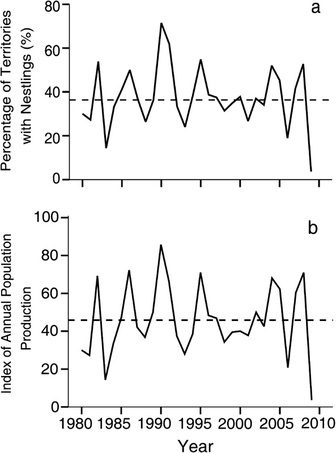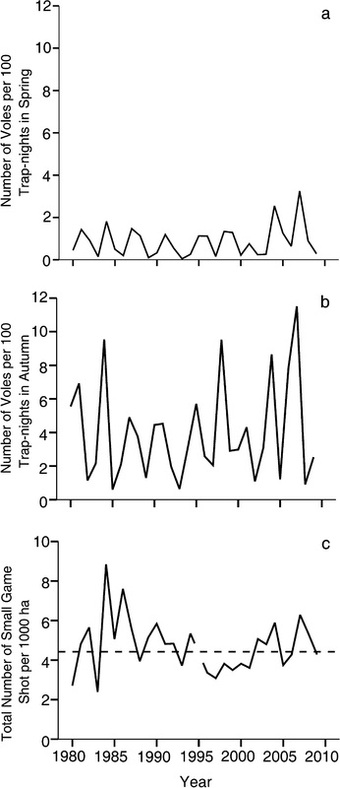Monitoring
Population changes
Population synchrony with prey species
|
The number of snap-trapped voles (bank voles [Myodes glareolus] and field voles [Microtus agrestis]) in (a) spring and (b) autumn, 1980–2009 in Västerbotten County, northern Sweden, and (c) the pooled number of the principal prey species for the Golden Eagle, i.e., small game, mountain hare (Lepus timidus) and Tetraonidae species, as indexed by hunting bag statistics. The dashed line indicates the mean number of small game shot per hunting year throughout the study period. Source: Moss et al. (2011) J Rap. Res.
|
- Annual Census
- Genetic Monitoring


